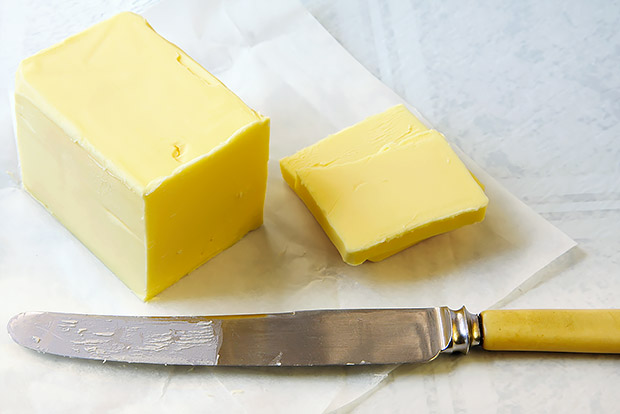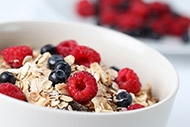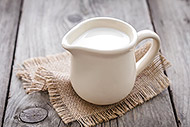
Butter and margarine have long been topics of nutritional debate leaving consumers confused about the best choices for health. This is what current research tells us about butter and margarine, including tips for selecting the healthiest option.
About Margarine
Margarine was once looked to as the healthy alternative to butter because it is made with plant oils, which contain less saturated fat and more heart-healthy unsaturated fats. Unfortunately, these oils have to undergo a process called hydrogenation to turn them from a liquid to a spreadable product. As a result, margarines may contain dangerous trans fats. Trans fat raises LDL (bad) cholesterol and lowers HDL (good) cholesterol, making margarine worse for your heart than butter.
When the health effect of trans fats became clear, manufacturers began to formulate new margarine and butter-like spreads that contain little to no trans fat. Current labeling laws in the U.S. allow nutrient labels to state 0 grams of trans fat if the food contains 0.5 grams or fewer per serving. The American Heart Association recommends that trans fat be less than one percent of total calorie intake, so it’s important to check the ingredient list as well as the nutrient label. If you see “partially hydrogenated” in the list, this is an indicator that the spread still contains trans fat.
About Butter
Butter is made from cream and contains saturated fat, which increases both HDL and LDL cholesterol levels. Many health professionals recommend that butter be used only in moderation, keeping in mind that recommendations for saturated fat are less than nine percent of your total daily calorie intake. (Some professionals believe below seven percent is ideal.) Butter contains seven grams of saturated fat per tablespoon.
Tips for Healthy Choices
According to Harvard Medical School, solid stick margarines that are still available are worse for you than butter due to the trans fat. However, there are newer products that are lower in saturated fat and contain no trans fats. Heart healthy olive oil is still considered superior to both butter and margarine spreads so use it whenever possible. Use butter sparingly, and consider whipped butter which has a lower fat and calorie content per serving.
Another option is to use more nutritious foods that have the qualities of butter and oils. Nut butters and avocados are full of heart-healthy fat and can be used as spreads and in baked goods. Applesauce and bananas don’t provide fat, but they provide both moisture and sweetness, allowing you to cut back on butter, oil, or sugar in recipes.
Sources



 3 Healthy Lunches for Your Work Week
3 Healthy Lunches for Your Work Week
 5 Tips for Stretching Your Budget for Healthy Food
5 Tips for Stretching Your Budget for Healthy Food
 Best Ways to Reduce Added Sugar
Best Ways to Reduce Added Sugar
 Healthy Tips to Lighten Up Picnic Foods
Healthy Tips to Lighten Up Picnic Foods
 Do You Need to Drink Milk?
Do You Need to Drink Milk?
 Tips to Keep Track of Water Intake
Tips to Keep Track of Water Intake
 Ways to Hydrate
Ways to Hydrate
 What Is a Paleo Diet?
What Is a Paleo Diet?

 Pinterest
Pinterest RSS Feed
RSS Feed